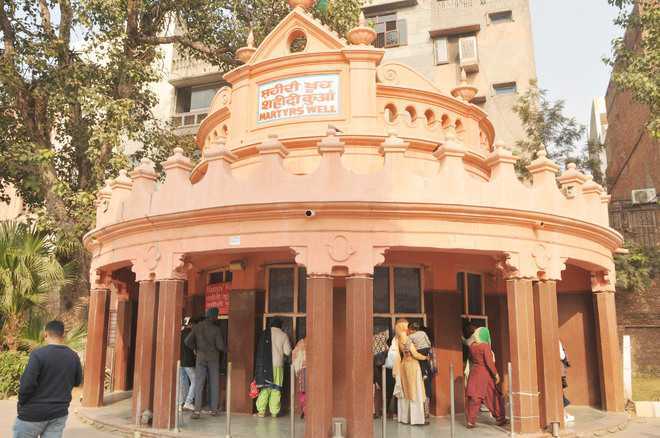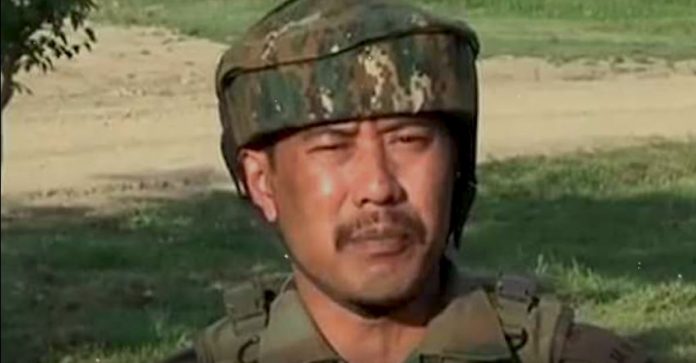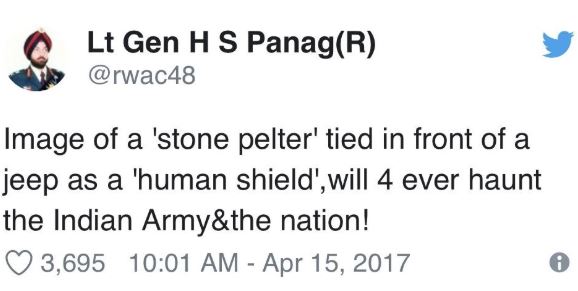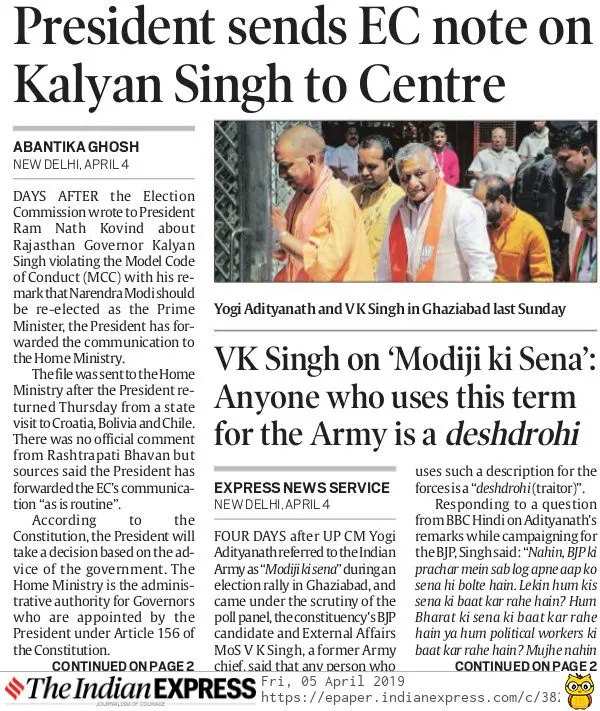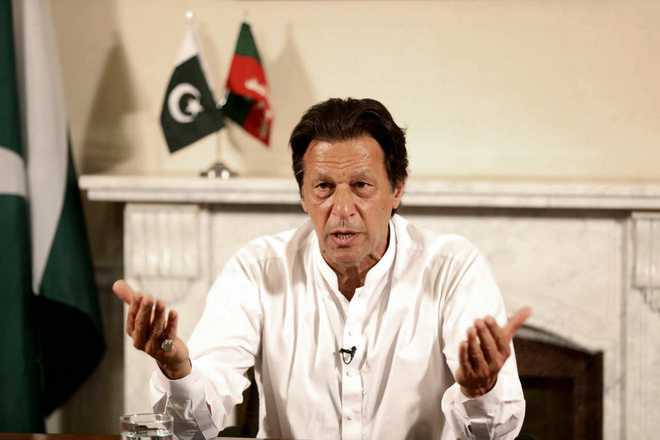The Golan decree recognises Israeli sovereignty on territories seized in the 1967 war. The world over, military capture or recapture of strategic terrain, when actively contested, carries formidable costs. This realism echoes all along our contested and unresolved borders.
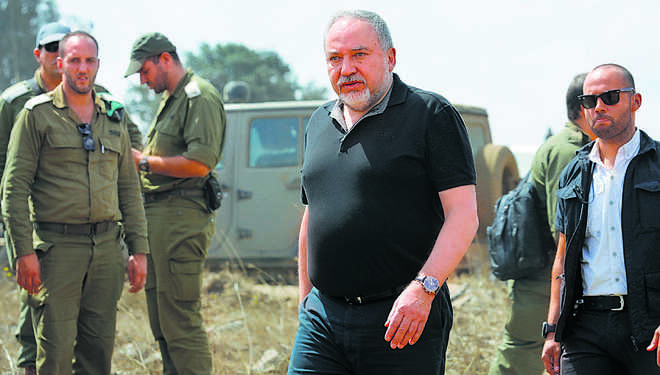
Lt Gen Sanjiv Langer (retd)
Former Deputy Chief, Defence Staff
ISRAELI Prime Minister Benjamin Netanyahu is poised for a historic fifth term. His election battle has undoubtedly benefited from the two gifts of US President Donald Trump — recognition of Jerusalem as the Israeli capital and the presidential decree of March 25, affirming Israeli sovereignty over the Golan Heights. Electorally, Trump’s gifts appealed to the extreme right parties, which have thrown their lot in with Netanyahu’s Likud party, nullifying the serious challenge by General Benny Gantz, a former Military Chief. The Golan decree, however, has far wider implications for disputed territories, the rules-based international order, and the Indian strategic environment.
The strategic Golan region (approximately 1,800 sq km) is a wedge of territory bordered by Israel, Jordan, Syria and Lebanon. An extended plateau superimposed with heights from 2,814 metre (Mt Hermon) to hills of 1,300 metre in the south. Bordered on the west by the Jordan river and the Sea of Galilee and in the south by the Yarmouk river, its ragged and challenging crestlines and heights give clear dominance to Israel over the Syrian expanse to the north and east, as well over South Western Lebanon. The control of the Golan ensures Israeli electronic and visual overwatch and facilitates unhindered launch of forces. More significantly, the region serves as a bulwark for Israeli territory to the west.
Golan’s strategic significance dates back to the early biblical times, and its importance is recorded from the times of Alexander of Macedon. In 1947-48, it was used by Syria for attacks into the nascent Israeli territories, and was fiercely contested in the Middle East wars of 1967 and 1973. During the terminal stages of the 1967 war, the UN Security Council called for a ceasefire on June 7. While accepted by Jordan, Syria continued to attack till June 9, when the Israelis launched an offensive. Thereafter, Syria accepted the ceasefire on June 10. The UN Security Council Resolution 242, while calling for cessation of hostilities and Israeli withdrawals, also affirmed Israeli’s right to live in peace within secure and recognised boundaries, free from threats and acts of force.
Israel’s right to exist and live in peace has never been recognised by Syria or Lebanon, and Israel never withdrew. The subsequent wars in the region with Syria and Lebanon, continued cross-border conflict, and the on-off negotiations have left the occupation unchanged. Significantly, all negotiations between Israel and Syria have been suspended since 2011 due to the war/civil war in the Syrian region. The decree of March 25 recognises Israeli sovereignty on territories seized in the 1967 war and is linked to a territorial reality. The subsequent outcry by some nations — as well as Syria, of course — and the UN is understandable.
Fundamental to the issue of international law and the rules-based international order being challenged is the UN Security Council Resolution (UNSCR) 497 of December 17, 1981, which was as a consequence of the ‘Israeli Golan Heights Law’. The law unilaterally extended Israeli administrative control and laws to the Golan region. The UN stated that the imposition of laws, jurisdiction and administration by Israel was null and void, without international legality. The resolution relied upon Article 2 Para 6 of the UN Charter, which focuses on the sovereign equality of all nations and regards the acquisition of territory by force as unacceptable. This UN Resolution has to be viewed in the context of the UN Charter. Article 1 of the Charter states that the UN’s purpose is ‘maintenance of international peace and security’. Can Article 2 of the Charter be applied in exception to Article 1? Article 4 says that the members (signatories) are all peace-loving States that accept obligations contained in the UN Charter. Consequently, can Syria, which has continued to attack Israel as well as allowed its territory to be used by several entities (violation of Articles 1 and 4), seek compliance of UNSCR 497? Can the UN remain committed to a 1981 vintage resolution that in no way reflects the reality of 2019 in the Syrian territory? While the US and Israeli affirmations may be debatable, the Syrian claims are legally infirm since no statute or charter can be applied selectively. Further, how does Syria claim international legal rights when it has violated international humanitarian law, causing untold suffering to its own population, based on exercise of its version of sovereignty?
An appreciation of the consequences in the Indian context revolves around our strategic neighbourhood. How do you apply and seek compliance of international law and UN resolutions with our western neighbour, who has a conspicuous history of nurturing and giving unfettered access to proxies and non-state actors from its territory? Is this not a violation of the concept of sovereignty (non-interference in the internal affairs of a neighbouring state)? Ever since the treaty of Westphalia, sovereignty carries the weight of governance and the rule of law in defined territories. Lack of control or connivance cannot be condoned under international law. How does India apply an international rights-based approach in its dealings with China? A nation which propounds its own version of history, legal interpretations, perceived injustices, and pre-eminent destiny. This is clearly evidenced by China’s posturing in the South and East China Seas and more significantly along our northern borders. As a mature nation, we must never lose sight of the legal and moral high ground in international affairs. Equally, when we live in a troubled neighbourhood, we must be intimately aware of the acute limitations of the international order and institutions in the 21st century. Israel is driven by its existential reality and the Trump administration has put its stamp on a strategic necessity. Implications of the US decree on Nagorno Karabakh and Cyprus are talked about in the media. We must, however, remember that each international politico-military situation is uniquely singular and no instructive generalisations are possible in the 21st century.
The Golan decree is a definitive step in keeping with strategic politico-military thought, which assigns exceptional guidelines to strategic terrain. It is most important to define this strategic terrain, and not dilute the classification. Thereafter, if this terrain is critical, it cannot be negotiated away. In the case of the Golan region, a territory captured by the blood of war, its loss, militarily or diplomatically, would strategically compromise Israel. Well-known examples in our context are Siachen and Kargil heights. The world over today, and in the foreseeable future, military capture or recapture of strategic terrain, when actively contested, carries formidable costs. This realism echoes all along our contested and unresolved borders.
As the Israeli PM looks forward to his next term, he probably will make good on his pre-election promise to extent sovereignty to portions of the West Bank. Whether this will be blessed by the US is presently not evident. This will directly impact the Palestinian State. In the Golan, the enduring challenge for Israel remains the predicament and future of the 20,000-odd Syrian Druze population.













